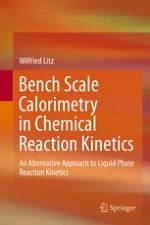2015 | OriginalPaper | Buchkapitel
2. Bench Scale Calorimeter
verfasst von : Wilfried Litz
Erschienen in: Bench Scale Calorimetry in Chemical Reaction Kinetics
Aktivieren Sie unsere intelligente Suche, um passende Fachinhalte oder Patente zu finden.
Wählen Sie Textabschnitte aus um mit Künstlicher Intelligenz passenden Patente zu finden. powered by
Markieren Sie Textabschnitte, um KI-gestützt weitere passende Inhalte zu finden. powered by



